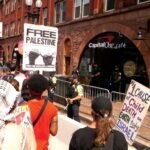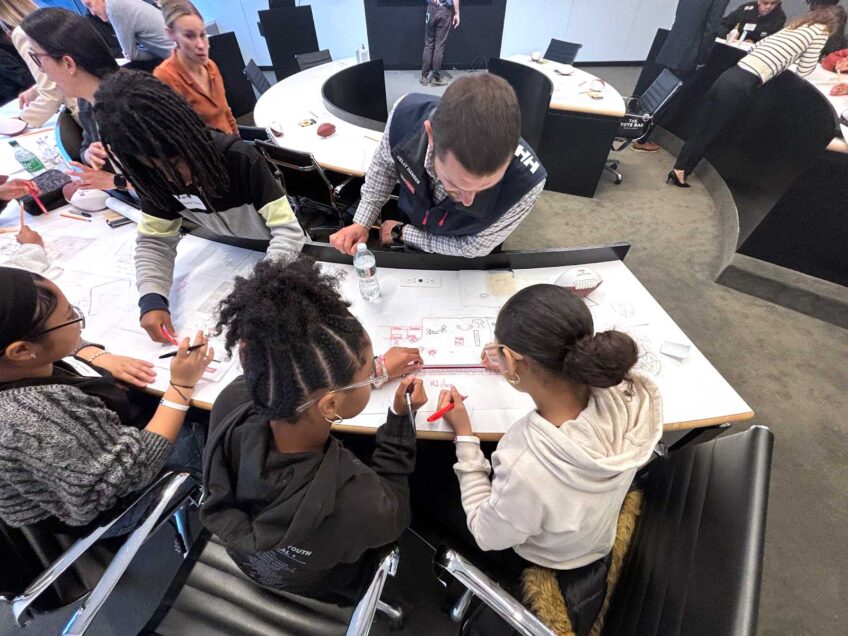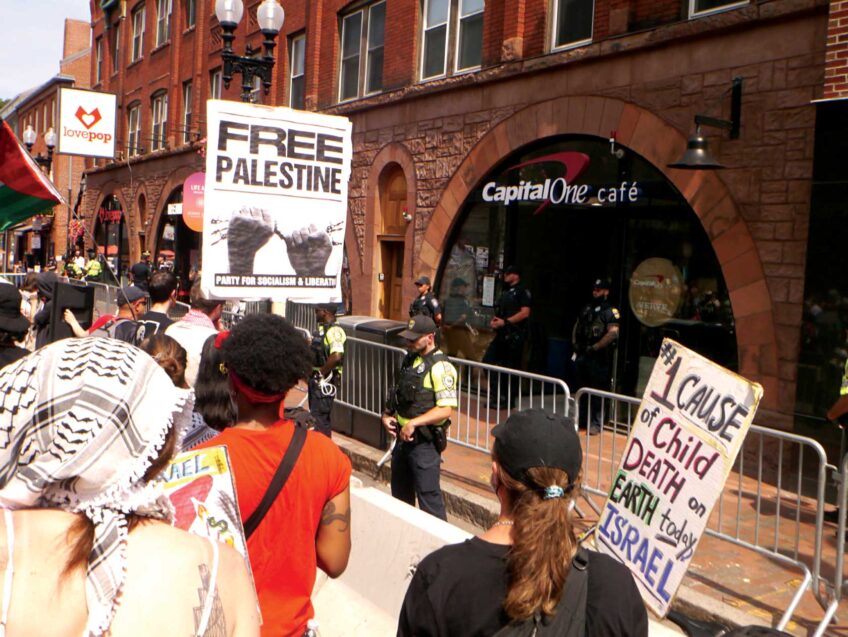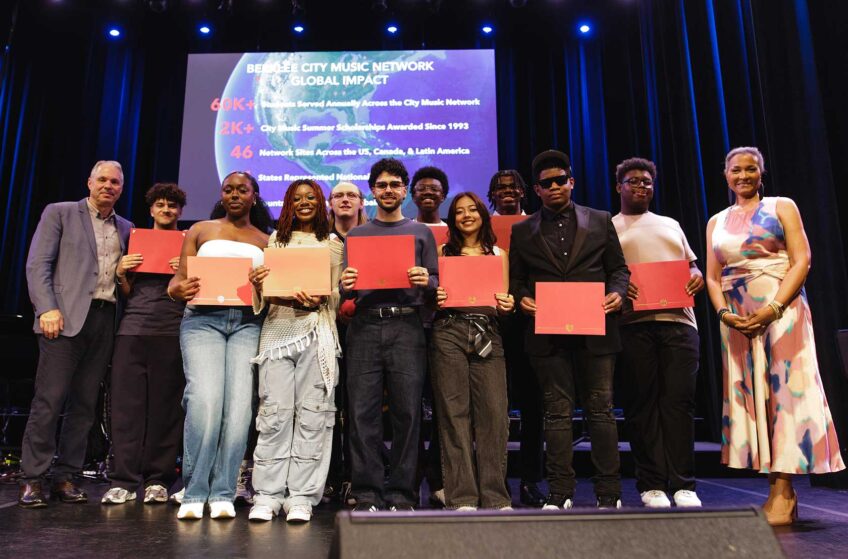A drumbeat call for cops in schools
Youth advocates say there’s no evidence police prevent crime
The mayor and a majority of city councilors polled by progressive groups during the 2021 election expressed opposition to placing police officers in Boston’s public schools, a position those council members say none has backed down from.
So when four of their council colleagues signed a letter in January calling for uniformed police officers and metal detectors in middle and high schools, a policy change still seemed a remote possibility. The city in 2021 removed uniformed officers from school buildings, replacing them with Boston Public Schools police officers who do not carry weapons or have arrest powers.
Yet the pressure for a police presence in the schools has ratcheted up in the last month.
The newspaper South Boston Today, a Boston Herald columnist and the online journal Catholicism.org all have repeated a key piece of misinformation in the letter by at-large Councilor Erin Murphy, stating that there were 744 sexual assaults in BPS schools during the 2021-2022 school year — an alarmingly high number that would represent more than four assaults per school day. In truth, there were seven students disciplined for “sexual assaults” — behaviors that range from unwanted touching to forced penetration. The 744 statistic referred to instances of “sexual misconduct,” a broad array of behaviors that can include students telling sexual jokes, commenting on each other’s bodies or sharing nude photographs.
Last week, a Boston Globe opinion writer cited incidents this year in and around BPS schools — a brawl near Tech Boston Academy in which three students were stabbed and two incidents in which middle school students were disciplined for carrying knives — in arguing for the city taking a fresh look at metal detectors and school police.
And the group Safety of Our Schools (Boston SOS) — a coalition that includes the Ella J. Baker House, Project RIGHT, The Central Assembly Church of God in East Boston and Promoting Conflict Resolution Inc. — cites rising crime rates among teens, calling for metal detectors and police in all middle and high schools.
”We are calling on Mayor Wu and Boston school leadership to listen to the voices of parents who are alarmed about the increased level of youth violence in Boston schools, the parents who are grieving because their child was brutally assaulted in school, and the parents who simply want their child to be educated in a safe school,” reads a press release on the group’s website.
Perception and reality
Murders, robberies, assaults and other violent crimes are at a low in Boston, with 40 people killed last year, far fewer than during the late 1980s and early 1990s when murders reached as high as 140. While Boston and other major cities have seen dramatic decreases in crime, there’s a common perception that crime is on the rise. A Nov. 2020 Gallup poll found that Americans are more likely to perceive crime as having increased than at any time since 1993.
The Gallup poll found that fear of crime was being driven largely by Republicans. In Boston — a Democratic stronghold — some say the fear appears to be driven in part by media columnists.
A Herald columnist, for example, wrote, “Boston Public Schools, once a model of quality education, have devolved into beleaguered institutions beset by violence, bullying, sexual assaults and other misconduct against students and staff.”
Leon Smith, executive director of Citizens for Juvenile Justice, said, “It feels like a coordinated fear-mongering campaign.”
Smith and others acknowledge the recent uptick in youth violence, but they maintain that police officers and metal detectors are not the answer. Outside the opinion pages of the city’s daily newspapers and the few smaller outlets beating the drum, there appears to be little appetite for returning police to schools.
City Councilor Kendra Lara said that Murphy, who penned the letter in support of police and metal detectors in schools, and councilors Frank Baker, Michael Flaherty and Ed Flynn, who signed the letter, are the only four councilors who appear in support of such measures.
“Besides the four of them, no other council member has stated they’re in favor,” she said.
Lara noted that the majority of the violent incidents that have received news coverage happened in the neighborhoods in which the schools are located — not in the schools themselves. There were two shootings in the streets around the Burke School, an assault by girls on a student and teacher on a street near the Young Achievers pilot school in Mattapan and the brawl in a park near Tech Boston Academy.
Lara, who worked for several years in the city’s Streetworker Program, working with teens and young adults involved in violence and crime, said metal detectors and police presence inside school buildings are no panacea for the violence that happens in Boston’s neighborhoods. She points to the Streetworkers program, summer jobs programs, counselors in schools and mental health supports as effective strategies that have in the past helped lower crime.
“We know what works,” she said. “Nobody wants to do it, because it costs money. They’d rather throw cops at the problem.”
Could police help?
Smith points to a 2020 study Citizens for Juvenile Justice conducted in conjunction with the organization Strategies for Youth. Looking at 12 different studies conducted over a 10-year span, the study found no positive impact of police presence in schools on school safety outcomes. Even in cases of school shooting, the report found that in nearly 200 such incidents, police officers inside schools were able to stop an active shooter only twice.
At the same time, the study found, in schools with police officers present, students are 40% more likely to be arrested for misdemeanors. And those arrests fall more heavily on Black and Latino students, according to Smith.
“Kids of color, kids with disabilities are disproportionately impacted by school-based arrests,” he said. “In Massachusetts. Black and brown students are 27% of the student population and 64% of arrests.”
Given the record of school police in Massachusetts and nationally, Smith says, bringing them back inside school in Boston would lead to the same bad outcomes for students.
“When you talk about policies that impact entire systems, they should be rooted ultimately in research, in data,” he said. “You can’t just be reactionary and base them on a notion and a handful of anecdotes, because that’s how you get bad policy that has unintended consequences for a bunch of people.”







